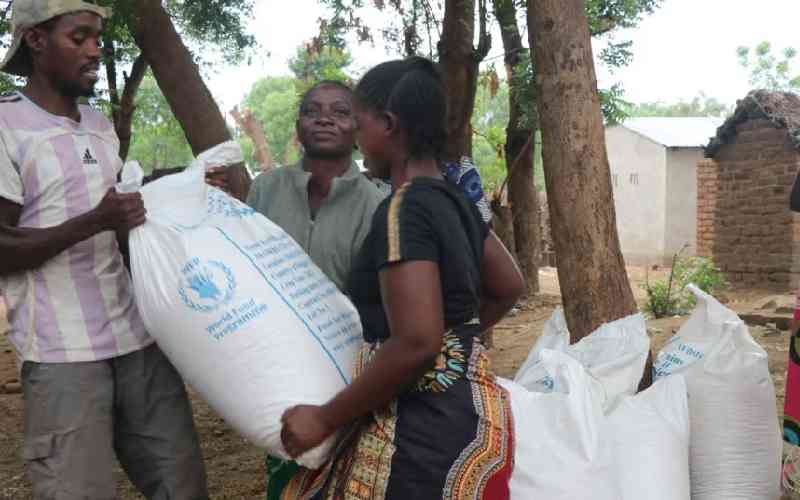UN food program helps fight rising cases of malnutrition in Malawi
Africa
By
VOA
| Oct 08, 2024

In Malawi, the UN's World Food Program (WFP) is working to address a rising number of malnourished children amid an ongoing drought, the worst to hit southern Africa in decades. The WFP's efforts include providing supplementary feeding for children in health facilities and distributing emergency food items to affected households.
Malawi has faced food insecurity for the past three years because of natural disasters that also affected other parts of southern Africa.
These include Tropical Storm Ana in 2022, Tropical Cyclone Freddy in 2023 and the El Nino weather phenomenon this year, which has led to severe drought in the region.
Climate change is also believed to play a part.
The WFP says in Malawi, the drought has damaged 44% of crops leaving 5.7 million people without food. This is over a quarter of Malawi's population.
READ MORE
Michuki firm, Nairobi County clash over ownership of prime land parcels
Wind power projects' fight takes new twist as it spills into Parliament
Why Somaliland could be Kenya's next big market
Second-hand clothes dealers call for transparency in new UN rules
Tourism sector lauded for accelerating global aviation links
Tourism sector lauds State efforts to boost arrivals at airports
Why Kenyans should brace for higher electricity bills this month
Railanomics: The people's economist who never ruled
Gertrude Chasafali is among those affected. She said she grows various types of crops including some vegetables but now struggles to find something to eat. Sometimes she eats one meal a day, or none at all.
Health experts say the food shortage situation has increased malnutrition cases among vulnerable groups such as pregnant and lactating women, and children under 5 years of age.
Feston Katundu is a nutrition officer in the Chikwawa district of southern Malawi, one of the hardest-hit areas.
"The prevalence of underweight children is 18%, which is high compared to Malawi as a nation because Malawi is at 13%," Katundu said. "For wasting we are also at 5%, while Malawi is [usually] at 3%, meaning that we are not doing well."
Katundu also said 34% of children under the age of 5 in Chikwawa are suffering stunted growth.
The situation has forced the WFP to provide supplementary feeding to malnourished children.
Paul Turnbull, WFP country director in Malawi, said in recent years the country could manage the situation but now needs help.
"In the last few years, the level of moderate acute malnutrition was possible by the Ministry of Health to manage by itself," Turnbull said. "But with [the] increase in number[s] now, we want to be able to ensure that the capacity is there in the Ministry of Health. So, we are supplying additional products and doing training so that children who have got acute moderate malnutrition won't deteriorate further."
Charles Kalemba, commissioner for the Department of Disaster Management Affairs in Malawi, said another reason the country faces food shortages is because of its dependence on rain-fed agriculture.
"If we can put our act together by moving away from rain-fed agriculture to irrigated agriculture we may solve this problem once and for all," Kalemba said.
In the meantime, the WFP and Malawi's government are delivering emergency food assistance to millions of Malawians impacted by the drought.

